Sire.

Maria McKinney’s Sire is an innovative exploration of selective breeding and genetics in contemporary cattle farming.
The series consists of nine large-scale photographic portraits, taken at an Irish stud farm, that depict bulls wearing eccentric, multi-coloured sculptures mounted on their backs.
The exhibition is on display at The MERL from 05/02/2019-27/10/2019.

It begins with a big cow
The MERL has a collection of what are known affectionately as ‘fat cow paintings’.
Livestock portraiture emerged as a genre of painting during the eighteenth century as a direct product of agricultural improvement. Paintings were commissioned to celebrate (and sometimes exaggerate) impressive beasts.
These absolute units were very often shown side-on, something which McKinney has reflected in her work.
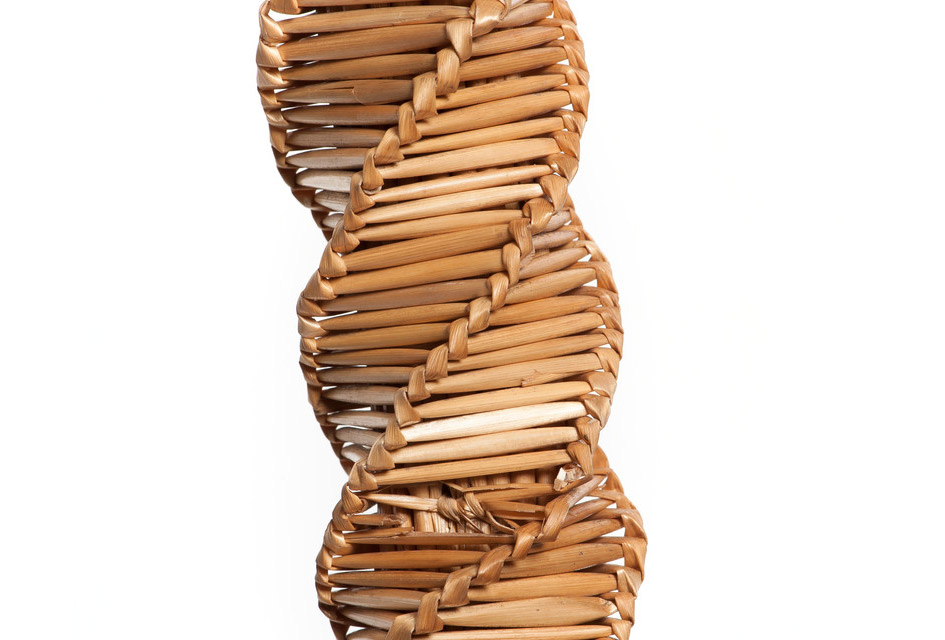
Strawcraft and semen straws
Romantic myths about ‘corn dollies’ emerged during the nineteenth century. McKinney’s imaginative take on the history of these artefacts is heavily influenced by popular ideas about their original purpose, which reference spirits and fertility. Maria adopted these strawcraft techniques from The MERL collection for her pieces.
Origin myths add to the potency of McKinney’s work, whilst the twisted forms and delicate skills of traditional strawcraft echo the intricate structure of the double helix and the complex science of its manipulation in livestock breeding.
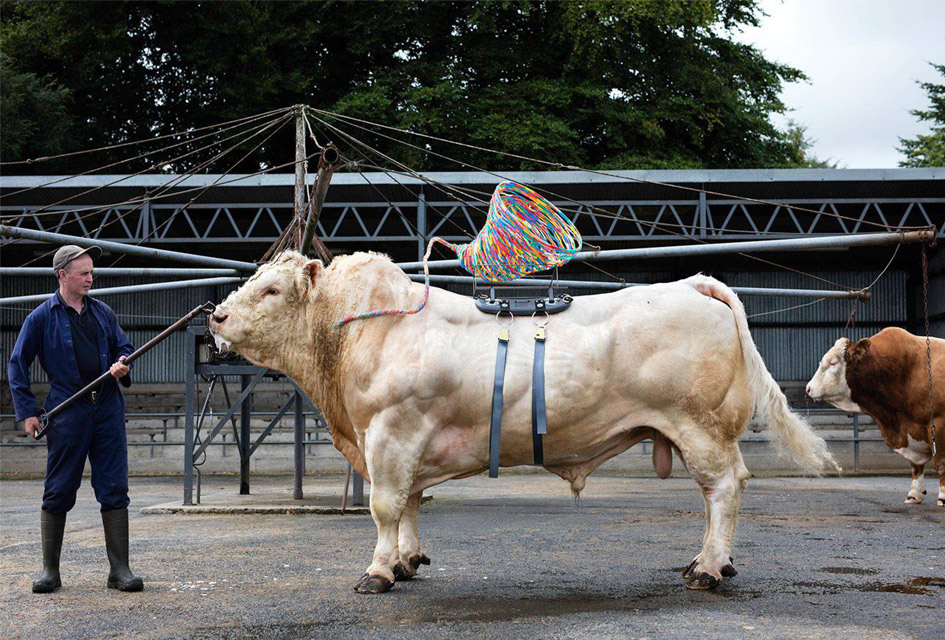
Mr. Universe
In 2011 Maria McKinney was asked to create a work which would respond to as well as integrate into an agricultural show.
She had also heard about the Belgian Blue, nicknamed Mr. Universe breed of cattle because of their extreme muscle mass and definition. This is caused by a genetic defect bred into them which turns off the Myostatin gene, which regulated muscle growth.
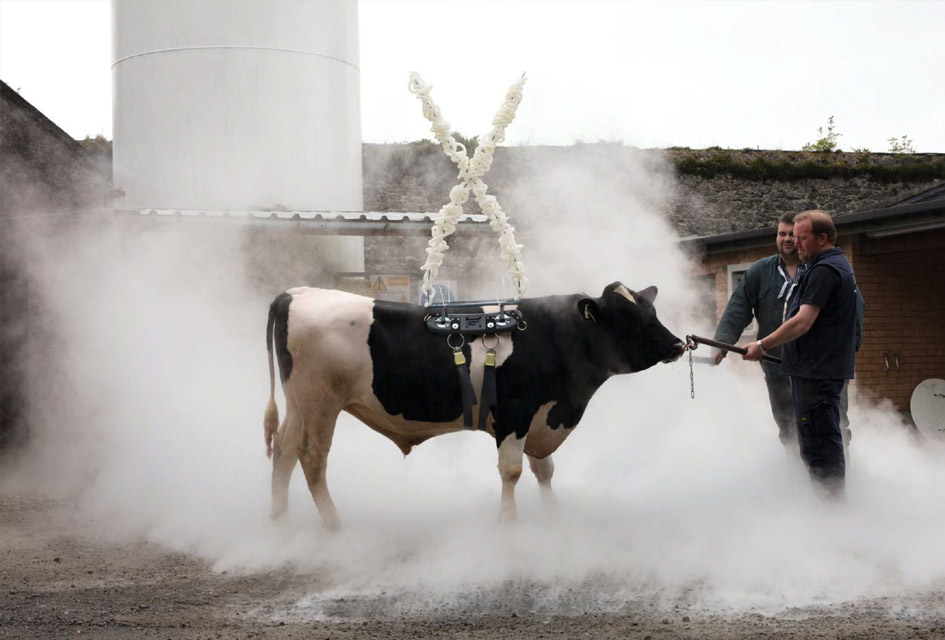
Phenotypes
McKinney was awarded funding by the Wellcome Trust to look at phenotypes (outward physical expression of a genotype) associated with different cattle breeds.
During talks with scientists and breeders, McKinney realised the direct connection between cutting edge genetic research and the food we put into our bodies.

Breeding strategies
Each sculpture references the nine breeding strategies for Ireland’s new Economic Breeding Index (EBI).
It’s a single figure profit index designed to help farmers make informed breeding decisions for their herds, and is based on findings from genomic research.
The pictured piece Breeding strategies is based on a comment made by one of the bull’s handler’s: “if only cattle were cubes”.
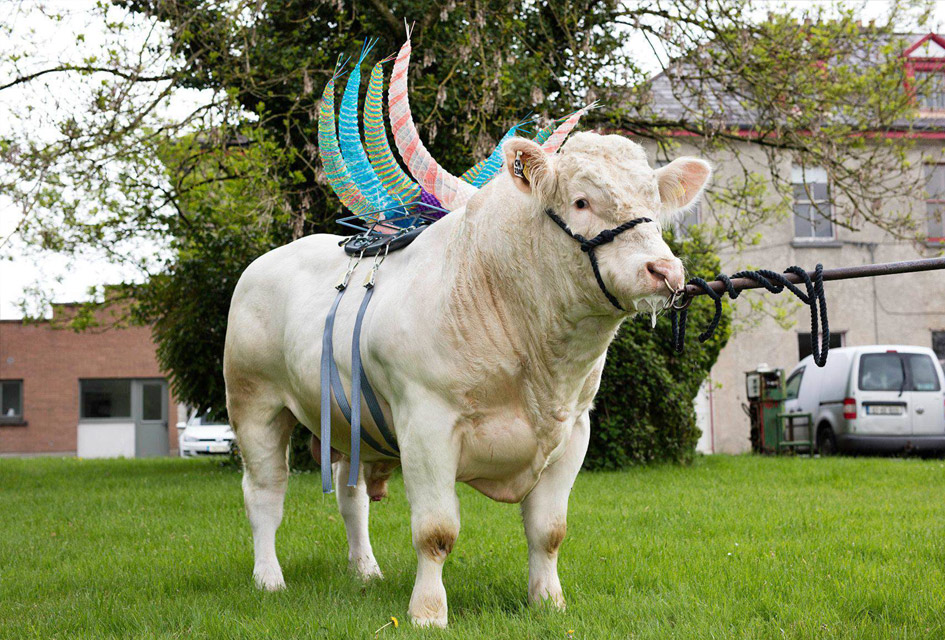
Activation and agency
The sculpture is not complete until it is on the back of the bull. Their bodies activate these objects.

The ethical question
There is a big ethical question for McKinney in what allows her to use the bulls as artworks.
She worked very closely with highly experienced handlers to make sure the animals were not made uncomfortable or distressed.
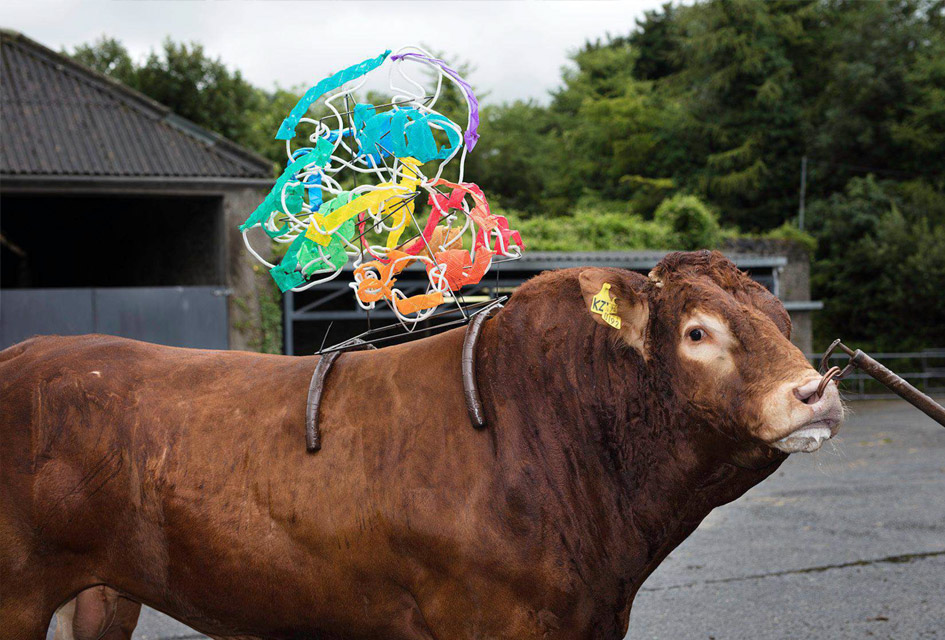
Lived Realities
Because the bulls could not consent, it was essential for McKinney that the sculptures communicated something about their lived realities.
The reality is that their entire lives are shaped around human consumption. Their bodies enter our bodies through consuming meat and dairy.
So having their bodies as an intrinsic element of the work was her reason for putting the sculptures on them.
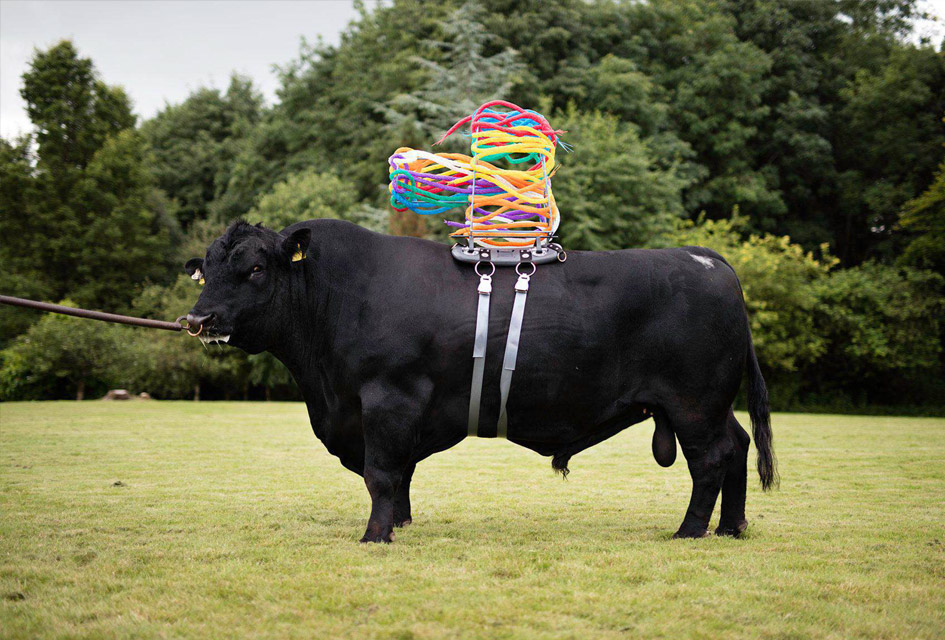
Joyful semen straws
Semen straws come in a wide variety of pop colours, but there is a functional reason for this.
Companies designate a colour to a breed so they can more easily identify which straw belongs to which breed when stored in large liquid nitrogen freezers.
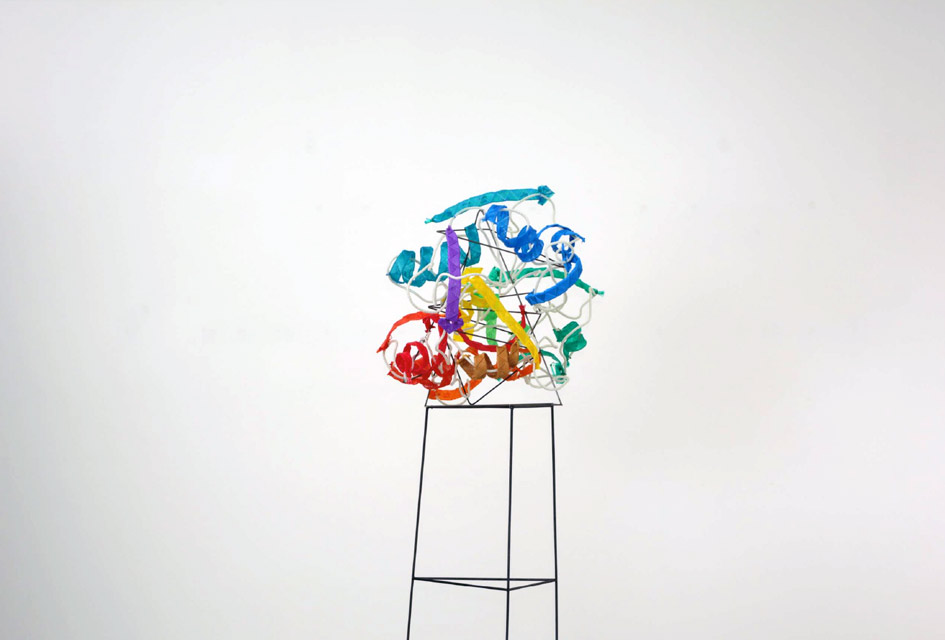
Proteins
Some of the sculptures are based on proteins – apoptosome, heat shock and toxin. Scientists are now able to decipher the physical complexity of these miniscule structures, and recreate them as 3D computer models.
In these 3D models colour is employed to help both scientist and layperson understand the formation of the protein as they move around it. Otherwise, it is incredibly complex.
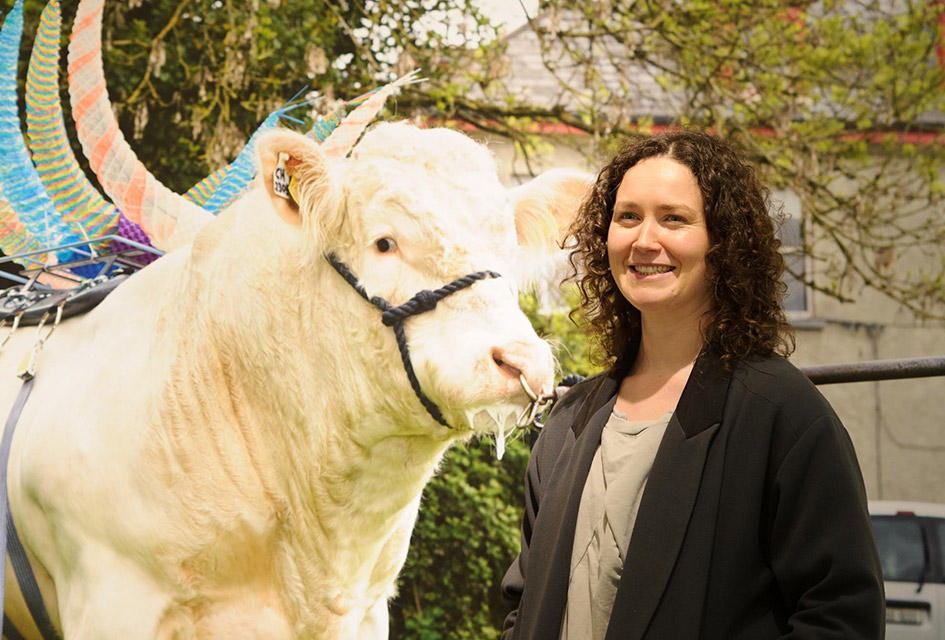
Maria McKinney
McKinney remains interested in cattle and our relationship to them. In future she is looking at the possibility of cultured meat, where starter cells are taken from a live animal and then grown and propagated in a laboratory.
Although this cultured meat would mean no animals would need to be killed, it would also mean drastically fewer cattle would be allowed to exist. Their current population is between 1.3 and 1.5 billion.
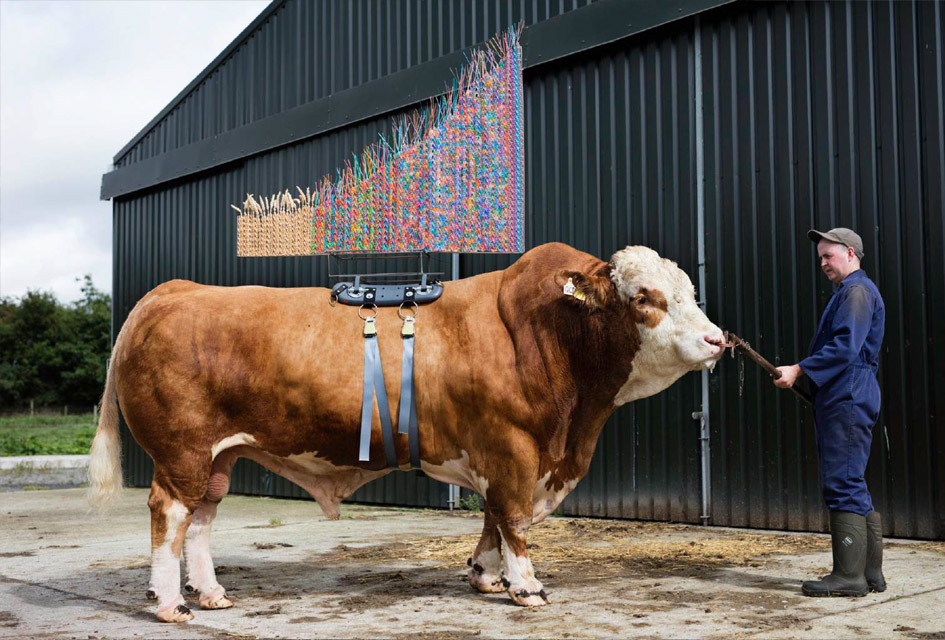
Sire.
This absolutely stunning display is only at The MERL for a short time. Come and see it between 5th February and 27th October 2019.